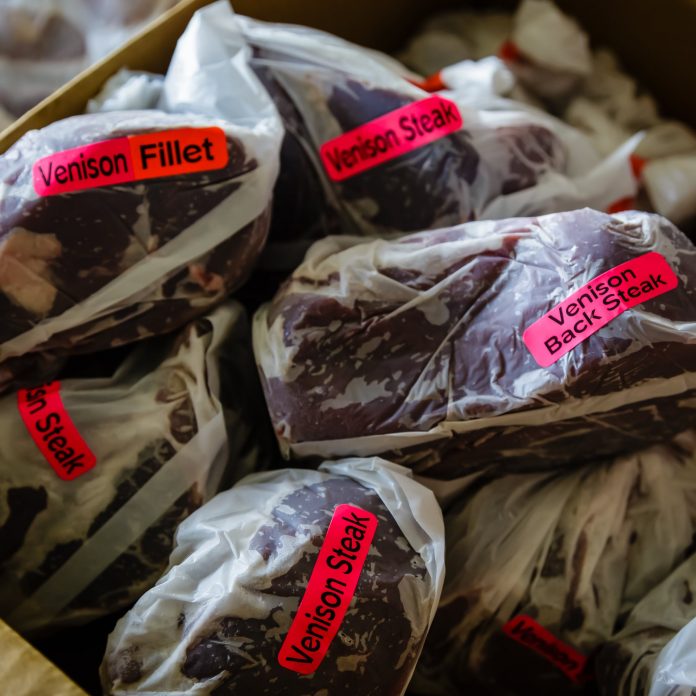Not every hunt ends with a kill. This is important to remember – additionally, even if it doesn’t, the stories and experience still are worth the effort.
However, hopefully, you do drop something, and if you do, it’s ethically and morally on you to ensure you get the most out of the kill, and for you and your family’s sake, in the cleanest, most hygienic manner possible.
In this article, we talk about some of the causes of spoilt meat and how to avoid them.
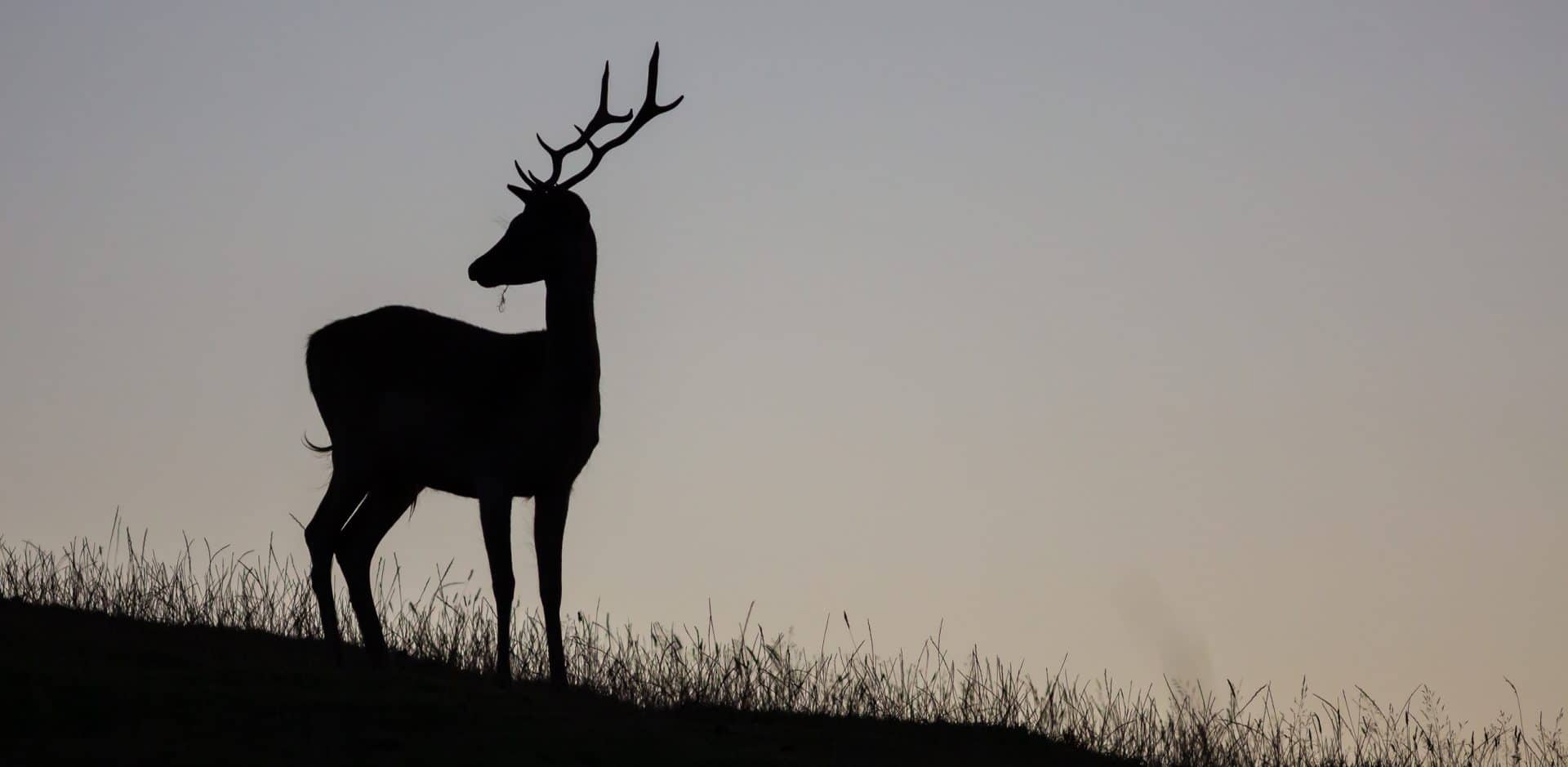
Gamey Tasting Meat
I really think that the ‘gameness’ most people associate with game meat is actually just poor care. The best Venison I have had came from animals that got dropped, processed and put straight into a chiller – probably a cleaner process than some meatworks. The worst – well – that was a Red that got pulled through a creak and hung outside a hut in some dodgy weather before being packed into plastic bags and carried home.
Deer does taste different from beef, sure – but ‘gamey’ – that could be something else again.
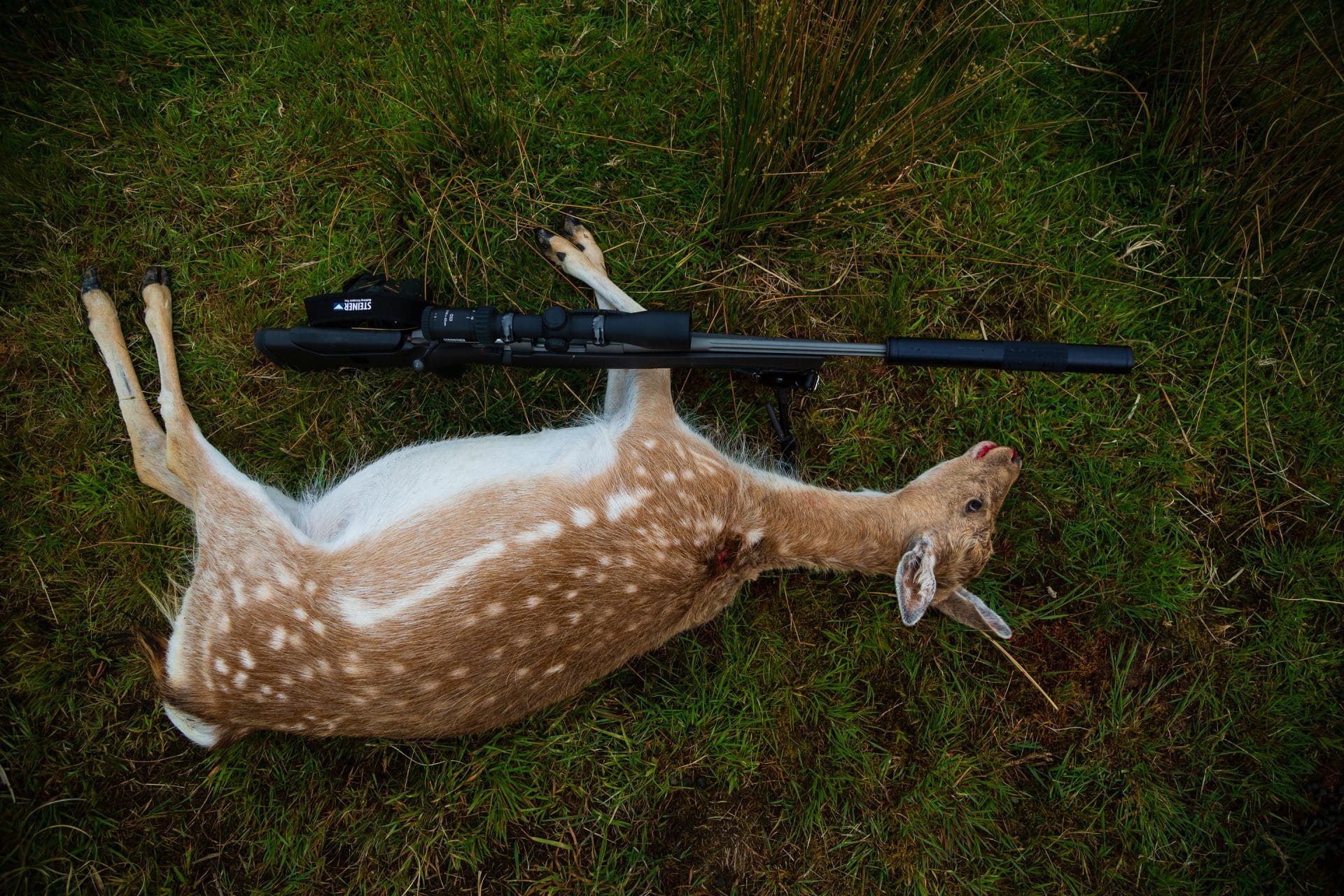
Keep your knife clean!
Probably one of the biggest tips is also the simplest. Keep your knife and the rest of your kit clean! Even when skinning/gutting/sectioning out the animal – be aware of where the knife goes when you put it down.
The inside of the skin is a good workbench – until you remove it from the animal, it’s generally one of the cleanest parts of an animal – Use it to put the knife on when you are working on pulling something apart, using it to sit parts of the animal being sectioned down onto – just be aware of what you are doing.
This also goes for anything else you might use in the process – I carry a saw for bone – but it won’t get used as a general-purpose saw. It’s a dedicated meat/food processing tool. Same as the actual knife I use to process an animal – it’s not my general use pocket knife.
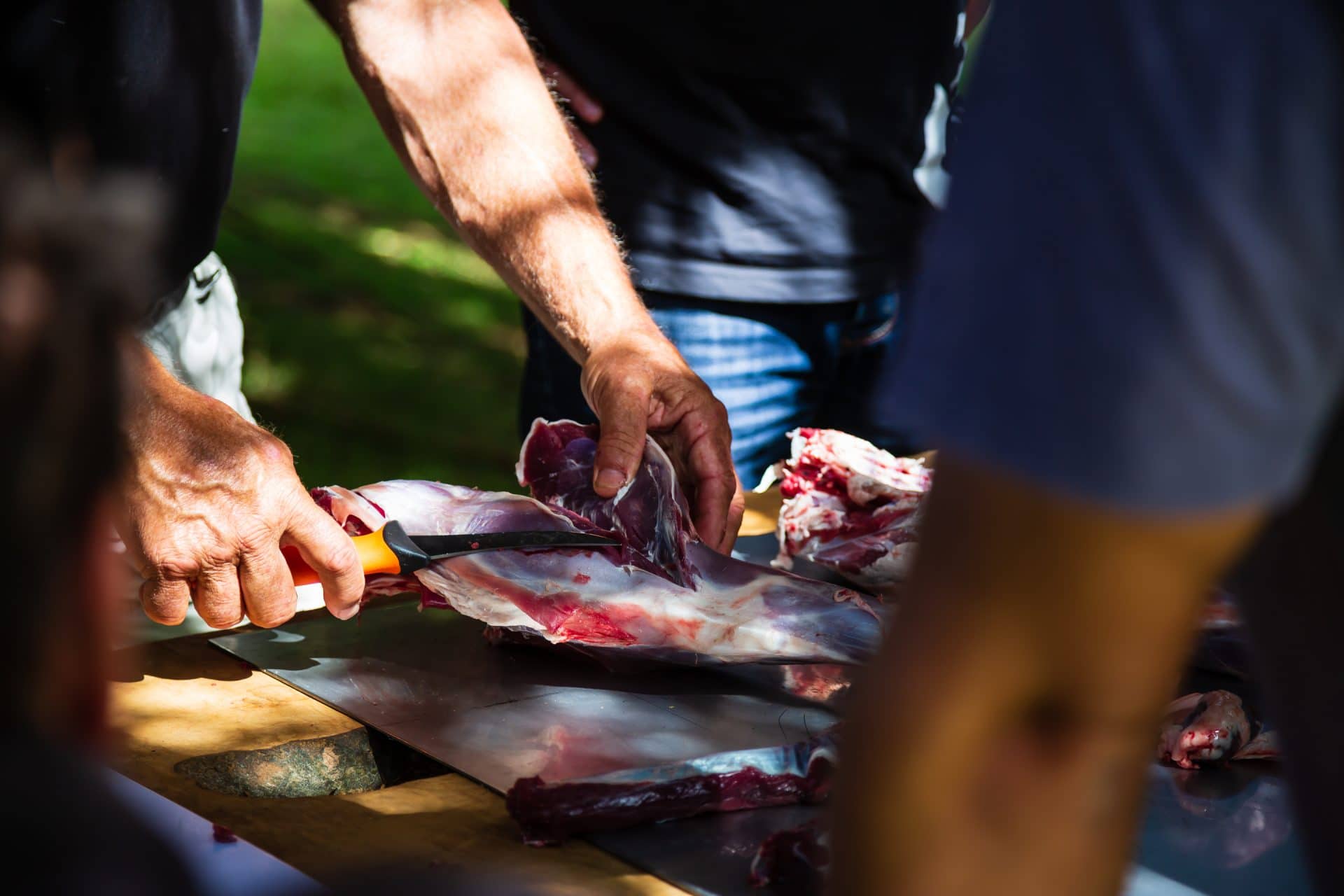
Meat Taint
Funky-tasting meat comes from a variety of reasons. Some are more major than others.
Clean everything out
Get everything out of the inside of the animal quicksmart. Internal organs, gut sack, little tufts of hair, bone, grass, everything. Cut out the anus and urine sack, remove the pizzle, everything…
Careful with the glands
While it is common practice to remove the scent glands on the animals – just be careful you don’t gut the glands themselves, then smear that over your knife and then the meat as well. If you are unsure – leave them for the home-kill butcher – or – make sure you take enough out that you are not cutting the glands themselves.

Not the green!
Nicking the Gut Sack
This can be done at two stages – while opening it up after shooting it, or, worse (in some ways), shooting it in the guts.
With a gutshot, there is, of course, a real chance that the animal will get away on you (not often with a decent blood trail either) and sadly die a slow painful death somewhere hidden.
It also potentially means that the bacteria in the gut gets spread throughout the entire circulatory system. If everything seems to smell… there is not much you can do with it. At worst, the smell is going to put anyone off eating it, at worst, you have spread something nasty through the system.
Open the gut sack while processing the animal, and you now run the risk of spreading the bacteria-ridden green over your nice clean meat. Worse still, it’s on the inside – which – until you opened it up, was likely the cleanest part of the animal!
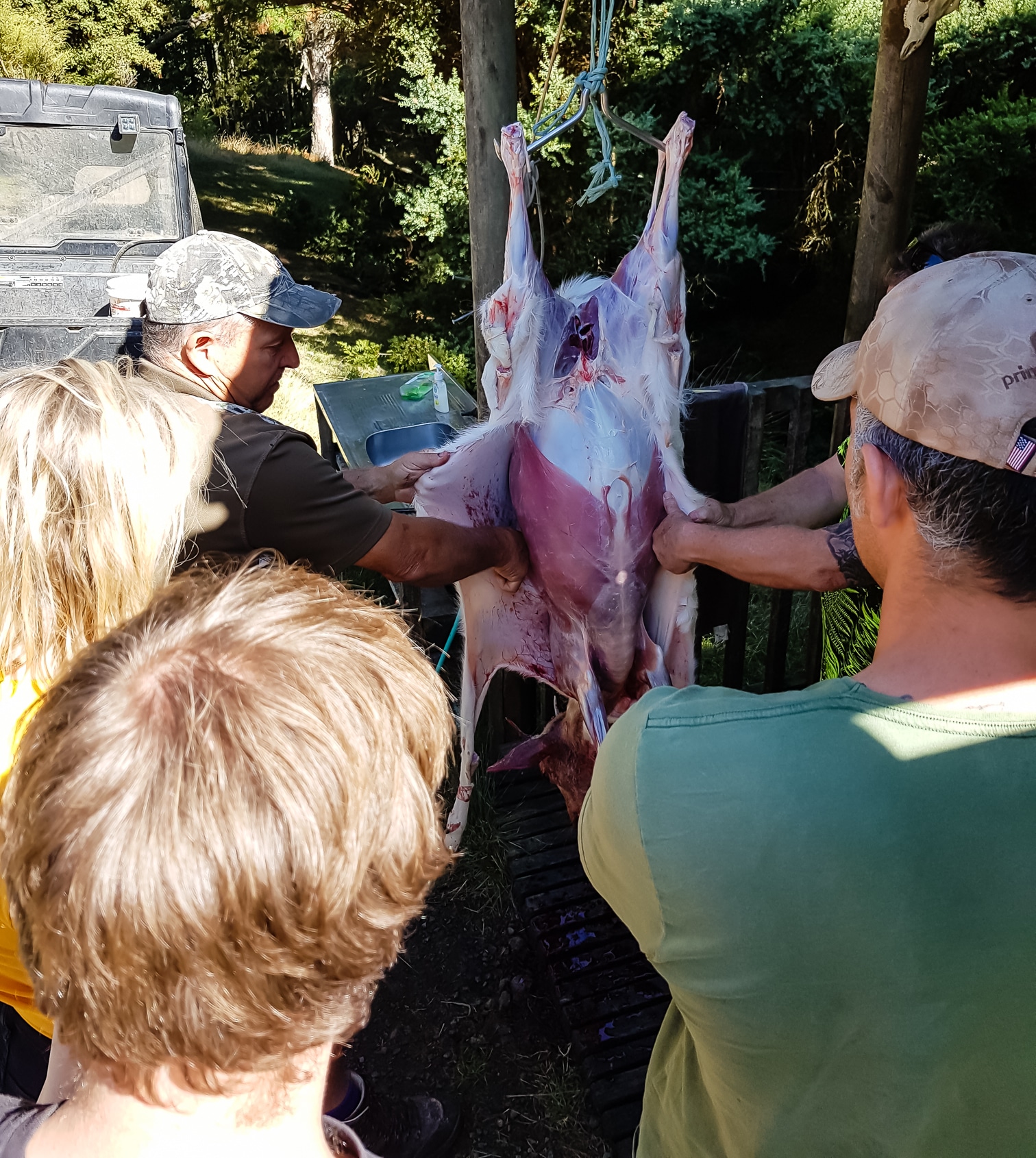
Don’t wash it!
At least, not with water out of the creek. Unless you are up in the mountains and we are talking glacier water, the local creek will likely have its own collecting of bacteria in it, which you are now spreading all over your meat.
Even if the water is clean, while you think you might be washing bacteria and taint off, what you are more likely doing is just spreading it throughout the entire carcass. Not ideal.
Shot Placement
The other obvious way of splitting open an animal gut sack is shooting them in it. Not only is this a nasty, slow, painful way to die, but it also can ruin the meat. Recovery is slower; the animal spends more time in pain, with adrenaline coursing through the body and potentially spreading bacteria through its system as well.
While hunting is messy, and sometimes it just happens, we must do everything we can to ensure our shots go where we want them to.
Don’t know where you should be shooting an animal? Then maybe look at heading along to a course and getting some education on the matter.
If you are processing an animal that has been gut shot – consider removing the back straps from the animal before opening up the guy cavity. There is a chance the inside has been tainted – but generally, the backstrap will be ok.

Bone Taint
Bone taint, also known as bone sour, is generally the result of too much heat being left in the animal, causing the meat near the bone to turn gangrenous (of sorts) and a visible green tint near the bone. Once it starts, it’s not something you can stop – even chilling the meat might not stop the spread.
Essentially, if there is heat still in the animal, the meat starts to rot from the inside out. Normally this is an issue with the larger animals – but – in warm weather, you can get it with Fallow-sized deer as well. We don’t have Elk (we, we do, Wapiti) and Moose in NZ as common animals to hunt – so the really big, big structures are not so much of an issue – but certainly, a big red needs a bit of care to ensure the animal doesn’t spoil.
Airflow
Get the animal gutted and opened up. Everyone has their own theory on this – but one of the best tips I have heard of is handing the animal (if you are in the bush, there is a tree about, and a lightweight pulley and rope is a great thing for your pack) and using a small branch to hold open the rib cage.
If it’s summer – obviously, in the shade, where there is a bit of a breeze going on is the best option.
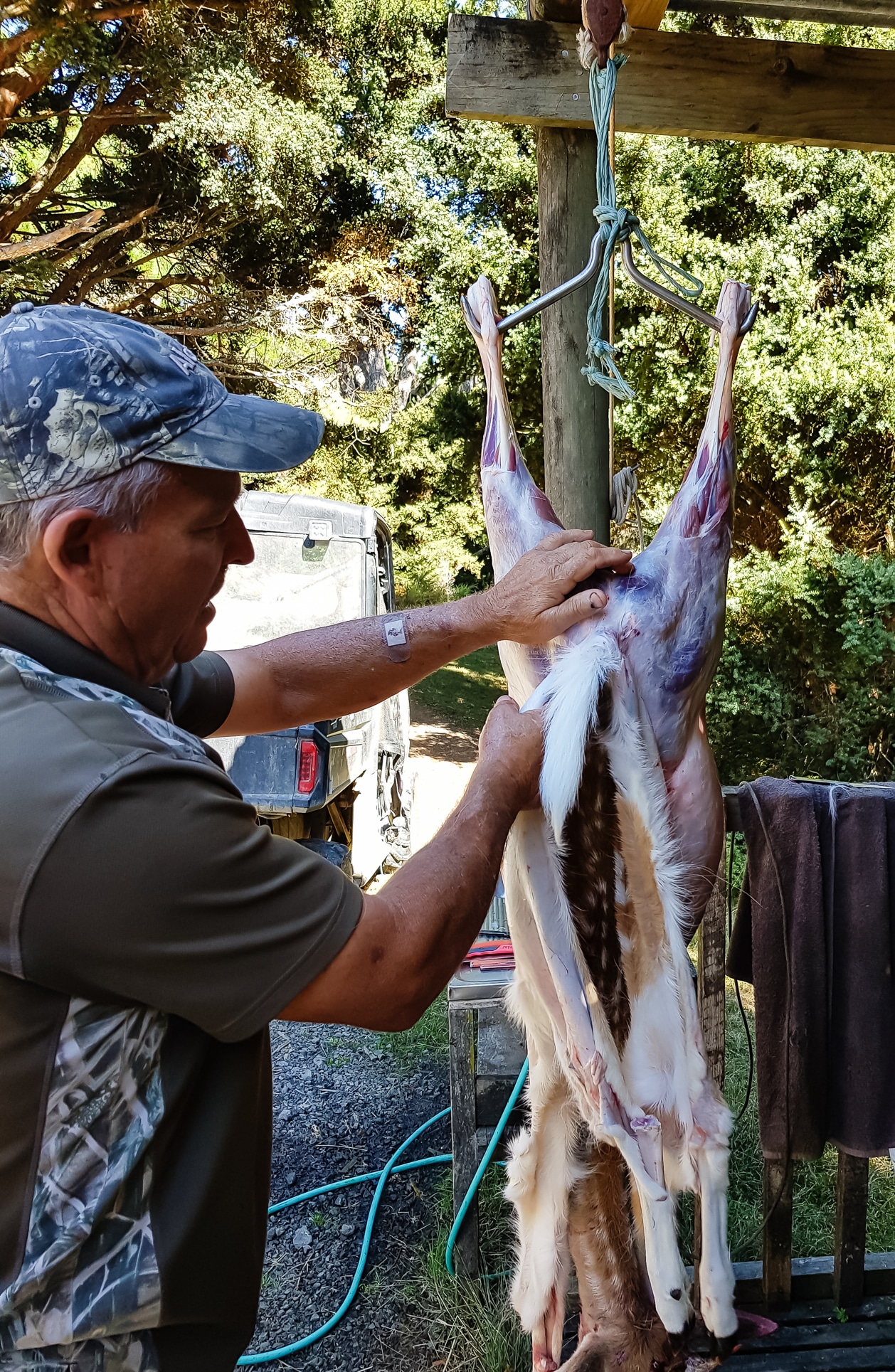
Crack the hips
The bones around the hip joint are the most common place to see the bone taint first – this is because it’s in these big bones/structures that you are likely to see the most heat retention.
If you are not planning on breaking down the animal after dropping it, it’s a good idea to pop out the hip sockets at least to get some heat dumped from that area.
Blood Shot
Often, there is a bit of meat damage, even with a perfect shoulder/boiler room shot. There is a separate conversation to be had regarding meat-saver shots, but let’s assume, for the moment, there is some meat that has been damaged.
Blood Shot meat is often jellied, bruised, and has a thick, mucus-like blood jelly. I would suggest you cut as much away as you can and discard. It will taint the taste of the meat around it if you leave it on.

Poor handling, transporting and hanging
Game Bags – not plastic bags
Whatever you decide to put your meat into – make sure it can breathe. At one end of things, you have pillowcases; at the other, specially made game bags. One of the main differences? The material – cotton, with blood on it, will retain the smell and stink. Not nice. Some game bags are made of a synthetic material that will wash out easier and not retain the smell or stain of blood and other bodily fluids.
Ice it, but separate it.
If you are going to get it into a chilly bin and drive for a while – pack some ice around the meat to keep it cool – but – make sure you physically separate the two somehow – wet meat, sitting in water for any period of time is not the nicest to look at.
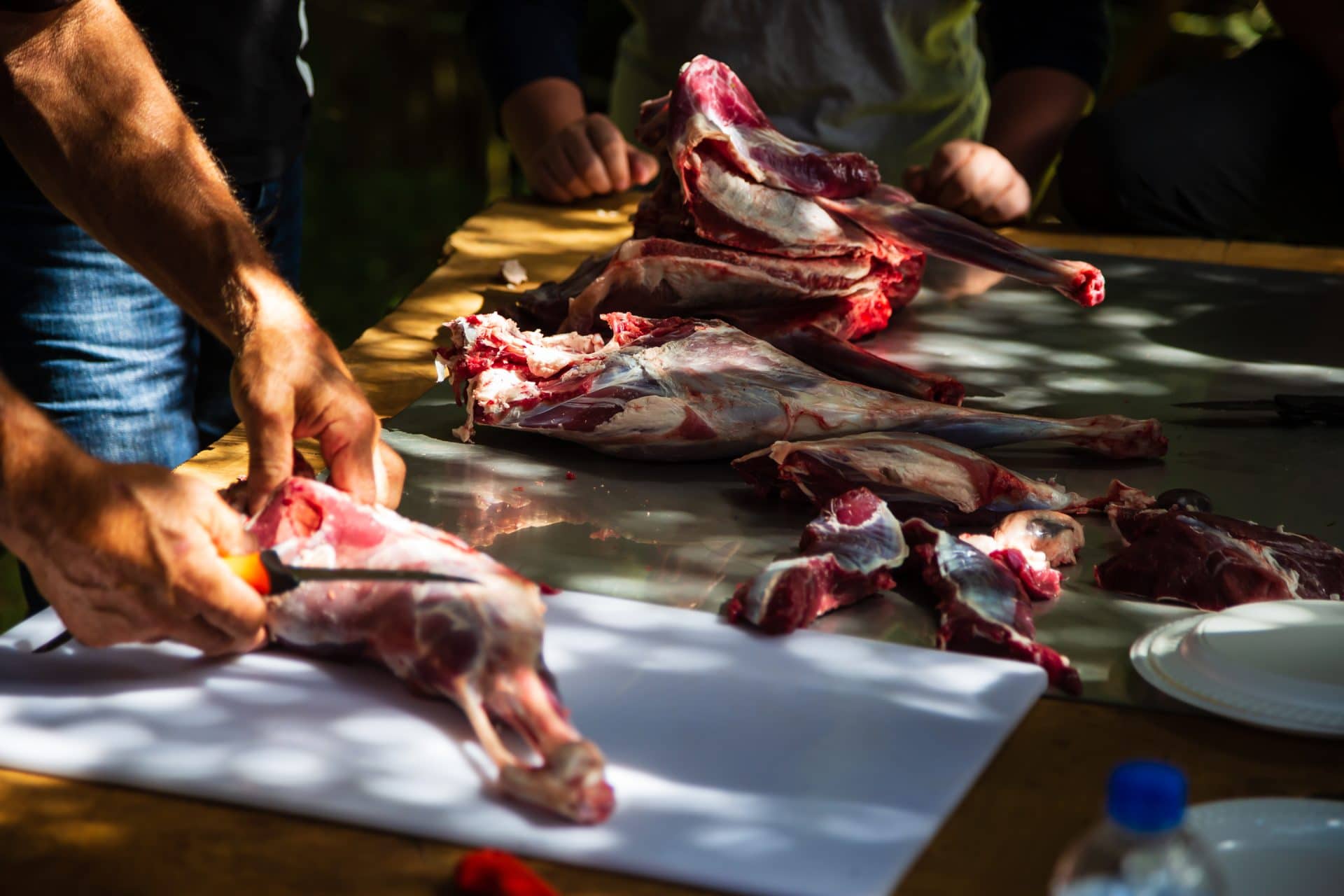
Rutting Stags
There seems to be a common belief that a rutting stag is only good for sausages – again – I have to wonder if part of this is due to poor meat handling processes. Refer back up to keep your knife clean. During the roar, a stag/buck will have piss and all kinds of body fluids on his stomach – the coat there will be black, stinky and plain old nasty. Don’t get it near your meat!
Often, processing an animal like this – the first cut is to remove all of the skin/fur around the stomach/chest/underside and throw it way away. Then, clean the knife very well. Better yet – use a different blade altogether.
Full Moon Taint
Seriously? No, it’s not a druid fertility ritual – it’s an old wives’ tale that handing meat under the full moon can result in bone taint.
There is no scientific reasoning behind it. Though, you might need to be wary of a werewolf stealing your animal!
A variety of reasons
There is a wide amount of reasons meat gets spoiled in the field – ranging from a little gamey tasting to a rank rotten mess. However, good handling and processing practices for animals go a long way, get the most out of the kill and pay the respect due for taking an animal’s life. Take your time, do it right, enjoy the results.

